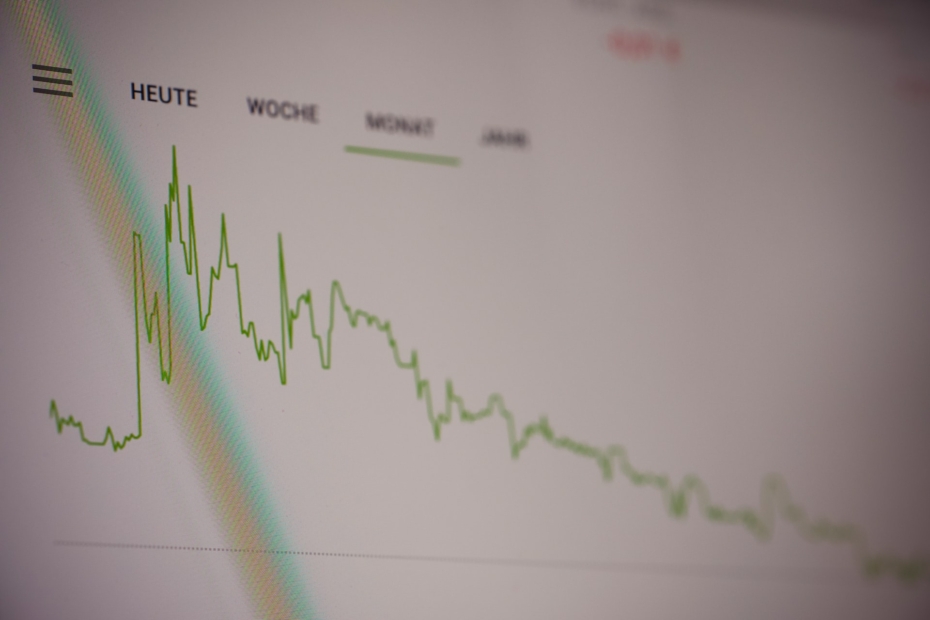Exchange Traded Funds (ETFs) have become one of the most popular and affordable investment options on the financial market for years. They offer private investors a cost-effective way to invest in a broad range of assets. ETFs are considered easy to use and transparent. They also allow investors to invest in different asset classes such as stocks, commodities or bonds.
But what exactly is an ETF? How does it work and what do I need to consider when investing in ETFs? You don’t need to be a stock market expert to invest your money in ETFs. This article will provide you with essential and useful information on the subject.
Contents
- 1 The most important facts in brief
- 2 ETF: Definition and explanation
- 3 Advantages and disadvantages of exchange traded funds
- 4 These ETFs are particularly popular with investors
- 5 These segments can be invested in with ETFs
- 6 Fees for ETFs
- 7 Investing with ETFs: Here’s what you should look out for
- 8 Investing in Exchange Traded Funds – Step by Step
- 9 Frequently asked questions (FAQ)
- 9.1 Which ETFs are particularly popular with investors?
- 9.2 What fees should I expect with ETFs?
- 9.3 How are ETFs treated for tax purposes?
- 9.4 What is meant by accumulating and what does distributing mean?
- 9.5 What does direct or indirect replication mean?
- 9.6 What is the difference between ETFs and index funds?
The most important facts in brief
- As simply structured and transparent funds, ETFs are also suitable for beginners.
- Investing in exchange traded funds incurs lower fees than actively managed funds.
- ETFs give investors access to a wide range of different markets, regions and asset classes.
- As an exchange-traded security, ETFs offer high liquidity.
- Comparison is important: ETFs can have different performance even if they track the same index.
ETF: Definition and explanation
ETF means Exchange Traded Funds. It is a fund that usually tracks a securities index as closely as possible (physically or synthetically) and tracks its performance. With these securities, investors have the easy opportunity to invest in numerous asset classes such as bonds, commodities and stocks.
Via ETFs, they can invest in various country indices, for example from Switzerland, Germany, the USA or Japan. It is also possible to invest in regional indices that track the European or American stock market, for example. In addition, ETFs can be found that follow current investment trends such as sustainability, health or digitalization.
Comparison of classic funds with ETFs
ETFs can generally be traded on the stock exchange as well as over the counter. Since they are often linked to a given index, they are passive forms of investment that merely track the performance of their underlying. To put it another way: If the value of the index increases, the value of the ETF also increases. Meanwhile, however, there are also active ETFs that do not simply track an index but are actively managed.
As with a conventional fund, the investment in an ETF also represents special assets. Therefore, you are not affected by the insolvency of the provider.
However, there is a significant difference between a conventional investment fund and most ETFs. In contrast to ETFs, conventional investment funds try to achieve a higher performance than their reference index. This requires ongoing research and rebalancing of holdings within the fund as needed.
ETFs, on the other hand, usually just try to track the underlying index exactly, eliminating the need for costly management.
Rapid development
After the first ETFs hit the U.S. stock exchanges in 1993, trading in Europe followed in 1999. Thereafter, the financial instrument developed rapidly. In 2000, the first ETFs were offered in Switzerland. In the meantime, more than 1,500 products are listed on the SIX Swiss Exchange.

Advantages and disadvantages of exchange traded funds
ETFs offer the following advantages in particular:
- Low total expense ratio: ETFs have much lower costs compared to actively managed funds. You save the initial sales charge, ongoing management fees are lower, and transaction costs are usually less frequent.
- Flexibility and liquidity: ETFs are liquid investment products that can be bought and sold during stock exchange trading hours – just like stocks.
- Transparency: To see the composition of an ETF, it is usually enough to look at the relevant index.
- Security: As with classic funds, investments in an ETF are special assets.
- Diversification: As an investor, you do not have to buy every one of the 20 stocks in the Swiss stock index SMI, for example. Rather, with shares in an ETF targeting the SMI, you can bet on all SMI stocks in a single transaction.
Invest in 1,600 companies simultaneously with one ETF
ETFs make it easy for you to build a diversified portfolio where risk can be minimized by having a very broad market. When you buy an ETF on the global index MSCI World, you get access to over 1,600 companies around the world. ETFs thus allow investors to spread their capital across a wide range of investment targets, ensuring a good balance of opportunities and risks. They also always have a clear idea of what they are investing in: A quick glance at the current structure of the respective index is enough.
ETFs also have some disadvantages that potential investors should be aware of before choosing this form of investment. Among the disadvantages are:
- Lack of investment management: since ETFs are passively managed funds, there is no active intervention from fund managers. This can result in poorer performance results for the ETF compared to other actively managed funds. This can be particularly the case in highly volatile markets.
- No consideration of personal investment objectives: ETFs strictly follow an index. This means that you either bet on this index or not. Individualization of your investment is therefore ruled out for the part of your assets invested in ETFs.
- Limited counterparty risk with synthetic ETFs: With synthetic ETFs, you do not invest directly in the securities contained in the index. Instead, swaps (exchanges) are used to virtually replicate the index. However, this transaction involves counterparty risk, as it is dependent on the counterparties being able to meet the obligations they have entered into.
However, the risks for investors are limited by the European rules that regulate investment funds. Accordingly, the value of a swap may not exceed ten percent of the fund’s assets.

These ETFs are particularly popular with investors
Among ETFs, equity ETFs dominate. Investors thus pursue a global investment strategy, effectively spreading risks in the portfolio. To supplement the equity component in the portfolio, investors prefer to buy ETFs that track bond indices. Thus, bond ETFs rank second in the popularity scale of investors. In the case of commodities, the term ETCs is used (Exchange Traded Commodities). These are often physically backed by the corresponding precious metals. Here, ETCs on gold are in first place.
The most popular ETFs and ETCs track the following indices and prices:
- Equity ETFs: MSCI World (around 1,600 stocks), S&P 500 (500 largest U.S. exchange-traded companies).
- Bond ETFs: Barclays Capital Euro Corporate Bond Index (global bonds, mainly corporate), JP Morgan Emerging Markets Bond Index Global Core Index (mainly US dollar government bonds from emerging markets)
- ETCs: Gold (bonds, physically backed by gold, based on the current gold price, the so-called gold spot price)
ETF Switzerland: Swiss like to invest in companies in their home country
In addition to ETFs that track the MSCI World, Swiss prefer to invest in ETFs that track the SMI and SMIM. The SMI (Swiss Market Index) is the most important stock index in Switzerland and includes the blue chips. The SMIM comprises 30 mid-cap stocks listed on the SIX Swiss Exchange. For Swiss investors, it is worthwhile to purchase ETFs on Swiss indices from a provider with fund domicile in Switzerland, as these are tax-privileged compared to foreign providers.
Reading tip: More on pillar 3a funds

These segments can be invested in with ETFs
If you not only want to diversify broadly, but also prefer certain segments or regions, exchange traded funds offer you a wide selection for this purpose. In the table below you can see a selection of the main selection options.
ETF Alignment | Examples |
Asset class | Shares, bonds, precious metals |
Indexes | MSCI World, S&P 500, SMI, DAX |
Regions | Global, Europe, Emerging Markets |
Countries | Switzerland, Germany, USA |
Topics | Biotechnology, climate change, robotics |
Industries | Industry, Retail, Technology |
Strategy | Dividenden, Large Caps, Small Caps |
Commodities | All precious metals, gold, platinum |
Fees for ETFs
When you buy ETFs, you initially pay only the bank’s order fees, stamp duties and usually a small spread (difference between the buying and selling price). With actively managed funds, on the other hand, an issue surcharge of up to five percent can be incurred at this point, as is well known.
At around 0.20 to 0.70 percent, the management costs are also significantly lower than those of actively managed funds, where you usually have to expect at least one percent. You can read about the total expense ratio (TER) in the securities prospectus. However, the costs listed there do not include the transaction costs incurred by the fund when trading securities.
In addition to the total costs, there are the custody fees charged by your bank.
Investing with ETFs: Here’s what you should look out for
Below are some key points to look out for when deciding to invest in an ETF:
- Consider your own financial knowledge: For investors who have little in-depth knowledge in a particular area, it is often better to opt for broader indexes. These diversify your portfolio across many sectors and regions and help reduce risk. You should also make sure that the composition of the ETF fits the strategy you are trying to achieve. Some ETFs invest in small companies or emerging markets, while others follow a broader approach.
- Check if total expense ratio is within normal range: Generally, ETF management fees range from 0.20 to 0.70 percent per year. In recent years, the industry has launched a product whose design is a mix between active and passive fund management. Active ETFs take a specific index as a model, but do not replicate it exactly. Rather, fund managers attempt to beat that index in terms of performance. However, these ETFs have a higher total expense ratio due to management costs. Whether the fund managers actually beat the index is, of course, still an open question.
- ETF Volume: Fund volume is an indicator to determine whether an ETF is established in the market or not. If an exchange-traded index fund has a volume of 100 million euros or more, its profitability is considered safe.
- ETF savings plans: Savings plans are not offered for all ETFs. However, they allow investors to easily make regular deposits in order to accumulate assets. This makes a higher return feasible than can be expected from a conventional interest account, even if the value of the assets may fluctuate in the meantime.
- Sustainability: In addition to actively managed funds, ETFs always allow you to invest according to ESG criteria.
Reading tip: How to design your private financial planning

Investing in Exchange Traded Funds – Step by Step
Now that you have learned about the essential basics, your investment in ETFs can be implemented in just a few steps:
First step: Determine your investment strategy
After you have looked at the possible segments, decide on the investment strategy you want. So, for example, choose whether you want to invest in the stock market. Do you prefer global diversification or stocks of Swiss companies? Should certain sectors such as technology dominate or do you see higher opportunities in topics such as robotics?
The Swiss Exchange offers more than 1,500 ETFs that invest in various asset classes, markets and currencies, allowing you to implement your preferred investment strategy.
Second step: Choose an index
To get a feel for the performance of an ETF, it is best to look at the returns achieved by the index behind it. In doing so, you should look at as long a time period as possible.
Furthermore, an understanding of how the index is calculated and its composition is important. Often, stocks are weighted by their market value. If you buy an ETF on such an index, you must not lose sight of the associated cluster risk. For example, the three large corporations Nestlé, Novartis and Roche make up about half of the index in the SMI.
Third step: Select provider for ETF savings plan or one-off investment
Once you have decided on an investment strategy and a specific index, look for an ETF on the market that tracks this index. Also keep in mind that not all ETFs offer savings plans if you decide to invest regularly with a savings plan.
Fourth step: Compare tracking quality
For ETFs on a specific index, compare the return with the return of the index, as there can be differences of several percentage points. For the comparison to be realistic, the ETF and index must either both reinvest any income, such as dividends, or both distribute it (performance index vs. price index).
Fifth step: Compare total annual costs
The annual costs incurred by an ETF are indicated by the total expense ratio (TER). This ratio includes management fees as well as costs for advertising and distributing the ETF. You can find the TER in the ETF’s monthly report.
Sixth step: Consider taxes and transaction costs
When choosing an ETF, investors should always consider where the fund is domiciled. A poor fund domicile can result in a reduced return from a tax perspective, as withholding taxes can reduce returns.
There are fees associated with buying as well as selling an ETF, which are especially significant if you do a lot of buying and selling. If you intend to trade your ETFs more frequently, you should therefore pay attention to low spread costs (difference between buying and selling price).

Frequently asked questions (FAQ)
Which ETFs are particularly popular with investors?
Among the most popular ETFs are those that are based on the global equity index MSCI World. In the case of bond ETFs, corporate bonds have been preferred as a basis in recent years. In addition, gold ETFs play a role as a security component.
What fees should I expect with ETFs?
Apart from the usual custody fees charged by your bank, there are only minor transaction costs when trading (small spread, the difference between buying and selling price). Experience shows that the total management costs for the ETF, which the provider takes from the fund assets, amount to around 0.50 to 0.70 percent of the fund assets.
How are ETFs treated for tax purposes?
Income from passive funds such as exchange traded funds (ETFs) is taxed as income and the assets invested in ETFs are taxed as wealth tax. For income tax purposes, it makes no difference whether the ETF distributes or reinvests income. However, accumulating ETFs must report the accrued income separately, which is usually done for ETFs listed on the Swiss stock exchange. You can see which income from ETFs is taxed in the price list of the Swiss Federal Tax Administration.
What is meant by accumulating and what does distributing mean?
Distributing means that income is paid directly to the investor. Accumulating, on the other hand, means that income from a fund is not distributed to investors but reinvested in the fund.
What does direct or indirect replication mean?
A physical ETF (direct replication) replicates an index by actually buying the securities of the index it tracks and holding them in the fund. A synthetic ETF (indirect replication) uses various financial products (e.g. swaps) instead of actually purchased shares to replicate the performance of the index. So there is an additional so-called counterparty, usually the issuer’s parent bank, with whom a “swap” is agreed.
What is the difference between ETFs and index funds?
The fundamental difference between these product types is that ETFs are traded on the stock exchange and can therefore be bought and sold on a continuous basis. With index funds, on the other hand, buying and selling only takes place once a day via the fund provider.
Sources
- [1] wikipedia.org
- [2] ubs.com
- [3] raiffeisen.ch
- [4] finanztip.de
- [5] extraetf.com
- [6] justetf.com


